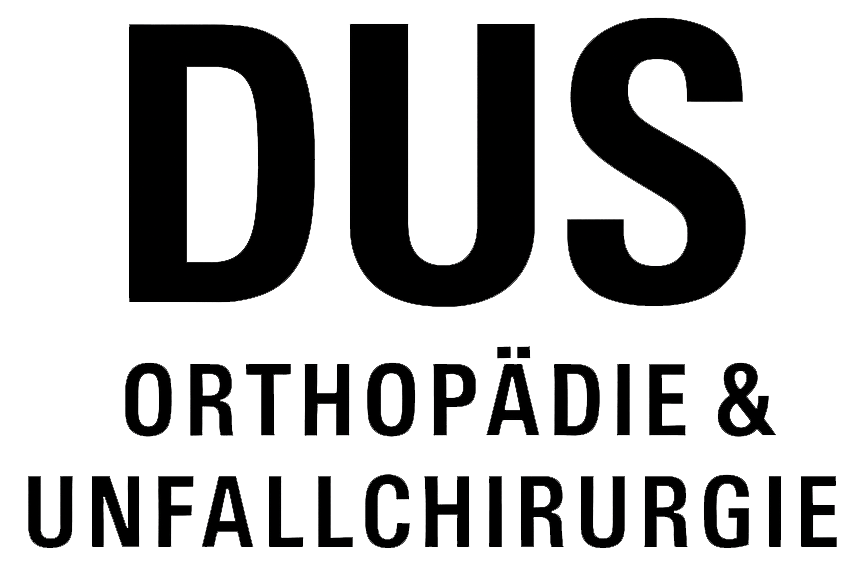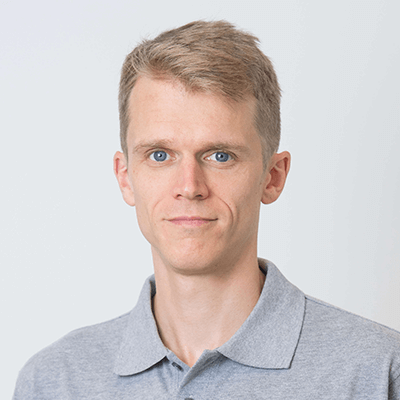Knee arthroscopy in Düsseldorf and the surrounding area: Small operation – big success
We are your specialized orthopedists for arthroscopic surgery in Düsseldorf.
Arthroscopy of the knee – simply explained:
Knee arthroscopy, or knee endoscopy, is a minimally invasive, endoscopic procedure on the knee joint. Arthroscopy means “looking at a joint from the inside”. The therapy usually takes place under a short anesthesia, which is low-risk for you as the patient.
Arthroscopy of the knee usually takes between 15 – 20 minutes and can help you quickly achieve significant relief from discomfort. Due to the short surgery time and minimal tissue damage, we can ensure that you will recover quickly and return to your daily routine after only a short time.
Arthroscopy: looking at a joint from the inside
Knee Arthroscopy: your pain can be treated quickly and efficiently
This is how simple surgery helps you with knee pain:
- Simple repair by minimally invasive surgery: The mechanical damage to the knee is repaired with the help of surgery.
- The pain goes away: The surgery causes the body’s inflammatory response that led to the pain to quickly subside.
- Treatment and therapy in the further course: After the operation, there is usually a follow-up treatment with physiotherapy and lymphatic drainage.

Knee arthroscopy: All the advantages for you as a patient
- Finally free of pain again: Arthroscopy of the knee as a procedure is usually very promising and has a very good treatment success. This minor surgery can quickly provide significant pain relief.
- Minimally invasive: You can put weight on the operated leg again immediately.
- Fast: you can go home the same day.
- Outpatient: You do not have to stay in a hospital or clinic.
- Short regeneration times: You get back to your everyday life quickly. After a few days, you will slowly be able to resume your usual daily routine. Your independence – including the resumption of sports activities – will be restored quickly.
- No long downtimes: You will also be able to resume your work soon. Usually patients are very fit again after 7-10 days.
- Driving after arthroscopy of the knee: Depending on the individual recovery time, most patients can drive again after just one week.
Brief information on Arthroscopy of the knee
| Procedure: | Arthroscopy of the knee |
| Duration: | 15 - 20 minutes |
| Anaesthesia: | Short general anaesthesia |
| Fit for society: | Approx. 5 to 7 days |
| Rest period after the procedure: | After approx. 4-5 days driving is possible |
Experts for knee arthroscopy in Düsseldorf: Experience sets us apart
Orthopedic practice in Düsseldorf specialized in arthroscopic surgery
We have the necessary theoretical and practical skills and have the necessary structures to offer you arthroscopic operations in Düsseldorf, such as knee arthroscopy.
Many years of experience through our doctors
Our orthopedic surgeons have a very high level of experience and offer you safe routines in orthopedic and trauma surgery. This certainty comes, among other things, from extensive experience as senior physicians in renowned hospitals.
Holistic care and treatment of our patients
As our patient, you will be completely cared for by our Düsseldorf orthopedic & trauma surgery practice. Your advantage is that you are completely taken care of by us before and after the operation – from the prescription to the wound checks to the certificate of incapacity for work. The entire treatment is covered by our practice. This saves you unnecessary travel and gives you a fixed point of contact for all your questions and requests.
Treatment success and support of regeneration:
Autohaemotherapy
We offer you, as a patient, the possibility to support the recovery after the performed knee arthroscopy with an autologous blood therapy. If properly indicated, after arthroscopic surgery, autologous blood therapy can be a low-risk, chemical-free alternative to injections with cortisone, among others, and can help you to recover quickly.
Learn more about autologous blood therapy
Hyaluronic acid therapy
Hyaluronic acid therapy has been a tried and tested method for decades and is an established treatment for joints. We recommend this treatment after arthroscopies. It will help you as a patient to regenerate faster after the surgery, because the injections support the knee joint and, among other things, the sliding ability of the cartilage improves. This will help you recover faster and support the function of the knee joint in the long term.
Learn more about hyaluronic acid therapy » will follow soon…

Knee arthroscopy, also called knee arthroscopy, helps with the following injury complaints:
- Meniscus tear: Acute tears of the inner and outer meniscus, e.g. due to a twisting accident of the knee joint.
- Meniscus tear: Wear-related, degenerative changes of the meniscus, e.g. which, during banal movements such as getting up from the sofa or from the car, can lead to a tearing of the meniscus.
- Cartilage damage of the knee – chondromalacia as well as knee osteoarthritis
- Free joint bodies at the knee – joint mouse
- Joint effusions – water in the knee
- Overgrowth of the synovial membrane of the joint – synovitis or synovial inflammation
- Entrapments
- Mucosal folds with entrapments – plica syndrome
- Cruciate ligament rupture (tears of the anterior or posterior cruciate ligament)
- Ganglion on the meniscus
Knee arthroscopy procedure – This is how the knee surgery works
Before the operation
Examination & Diagnosis – In an initial appointment at one of our practices, we take a lot of time with you. We will advise you extensively on all your questions, wishes and problems and make a reliable diagnosis in an examination.
Choice of date – If there is an indication for performing a knee arthroscopy, we will coordinate a suitable date for the surgical procedure on the knee with you.
Clarification – In the run-up to the procedure, we will explain the treatment to you in great detail and tell you all the advantages and disadvantages of the procedure. Of course, we will also show you alternative therapy options. This gives you the expertise to make the best choice for you together with our doctors.
The day of the operation
Reception at the surgery center – On the day of the surgery, we will receive you at the surgery center where your surgery will be performed.
Outpatient surgery – Almost always, if the patient is in sufficient physical condition and postoperative care is provided at home, this surgery can be performed on an outpatient basis. The operation usually takes place under a short general anesthesia.
Minimally invasive surgery – Knee arthroscopy itself is performed through two incisions on the knee joint, each approximately 0.5-1 cm in size. Through the first incision, we surgeons enter the knee joint with a so-called “endoscope” to which a camera is attached in order to see inside the joint. Through the second approach, we use special instruments to repair the damage you have to your knee that has led to your pain.
Duration of knee arthroscopy – The actual procedure takes 15-20 minutes. You will usually be discharged about two hours after surgery and able to walk home independently on two forearm crutches. Normally, you are allowed to put full weight on your operated knee in a pain-adapted manner. The knee is then already able to bear the load again without problems.

Anesthesia & Preparation:
After anesthesia has been administered, the patient is placed on his or her back. The patient receives a type of blood pressure cuff on the thigh of the affected leg which is inflated to 250 mmHg: the so-called “tourniquet”. This is to prevent bleeding from affecting the view in the joint during surgery. After completion of the arthroscopy of the knee, the tourniquet is removed. Occasionally, a kind of “muscle soreness” occurs in the patient’s thigh, but this is completely harmless and will disappear completely on its own after a few days. The leg is placed with the cuff in a kind of “leg shell” or also called “leg holder”.
Sterile washing and draping:
Team Time Out:
With the help of a checklist, the operation is discussed with all the people involved. The patient is identified, the planned procedure is briefly discussed, the location of the procedure is repeated and confirmed, and the sterile and complete presence of the instruments required for the operation is reconfirmed.
Operation procedure:
The skin is then closed with two sutures and sterile plasters are applied. Depending on the findings, the insertion of a Redon drain may be necessary. The Redon drain is a tube in the joint to which a small plastic bottle is attached to allow the blood and wound water to drain. This is removed the following day during the first dressing change in our practice.
After knee arthroscopy
Follow-up check on the following day – On the day after the knee arthroscopy, we will welcome you in our practice for a wound check and discussion of the further procedure. For further care, we will arrange appointments with you to check the wound and remove the stitches.
Removing the stitches – Ten to twelve days after the operation, we will remove the surgical stitches.
Physiotherapy – For full recovery, physiotherapy therapy is usually given in combination with lymphatic drainage, which will take place over a period of three weeks and include two to three exercise days a week.
How long are you restricted as a patient?
Back in motion – Often patients can do without the forearm crutches after just three to four days and manage without pain medication. So, as a rule, you will quickly be independent again. How long you are unable to work after a knee arthroscopy depends on your occupation. As a rule, you will be fit for work again after 7–10 days.
Quickly back to everyday life – After ten to twelve days at the latest, you will be fully operational again. Depending on how active and fit you are and your general physical condition and activity level, you will quickly be able to resume your usual daily routine and sporting activities.
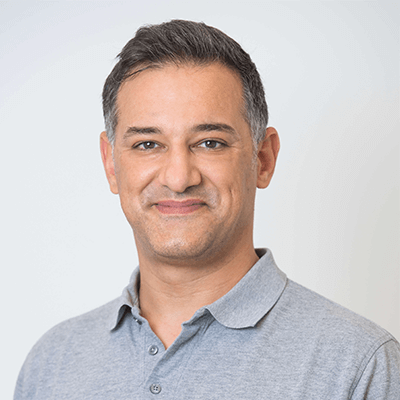
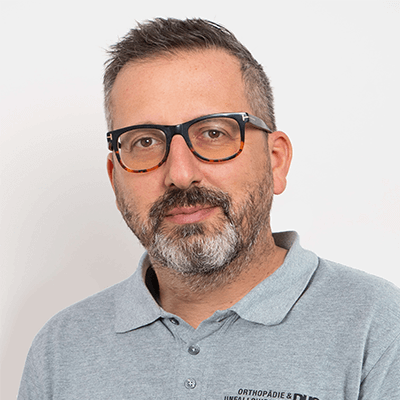
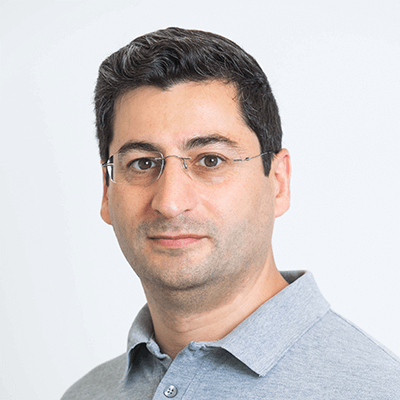
LOCATION
Location Düsseldorf-Stockum
Orthopaedist Düsseldorf: Dr. med. Leonid Blüm
Location Düsseldorf-Grafenberg
Orthopaedist Düsseldorf: Panagiotis Karachalios, Dr. Leonid Blüm, Gökhan Dogan
Location Düsseldorf-Oberkassel Heerdt
Orthopaedist Düsseldorf: Alain Dalemans, Turan Ocak and Christopher Arnold
